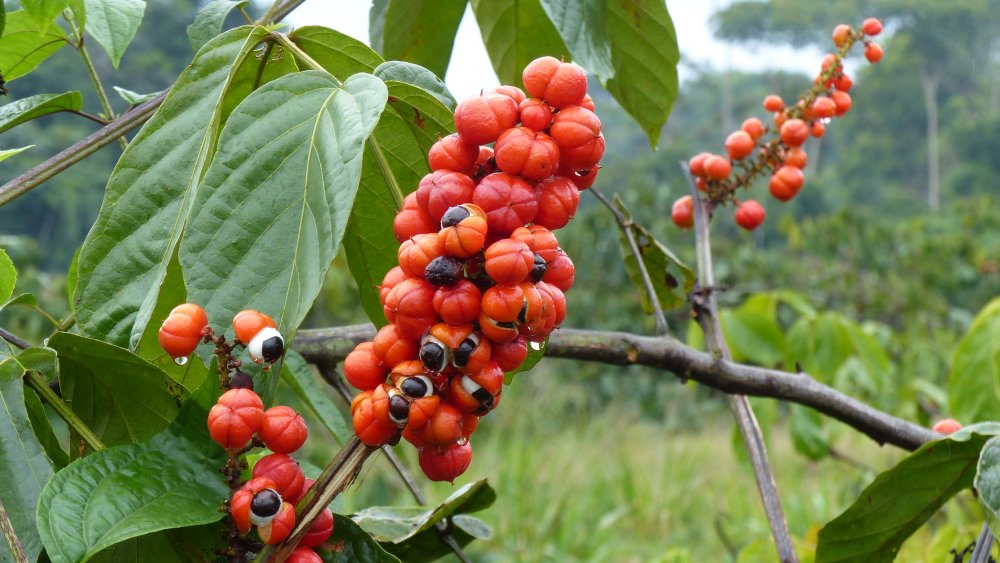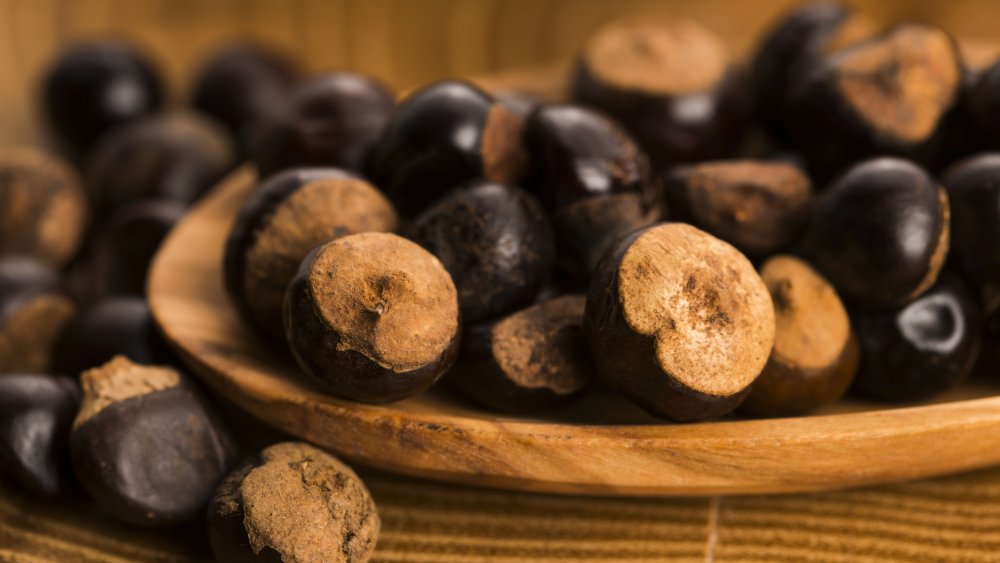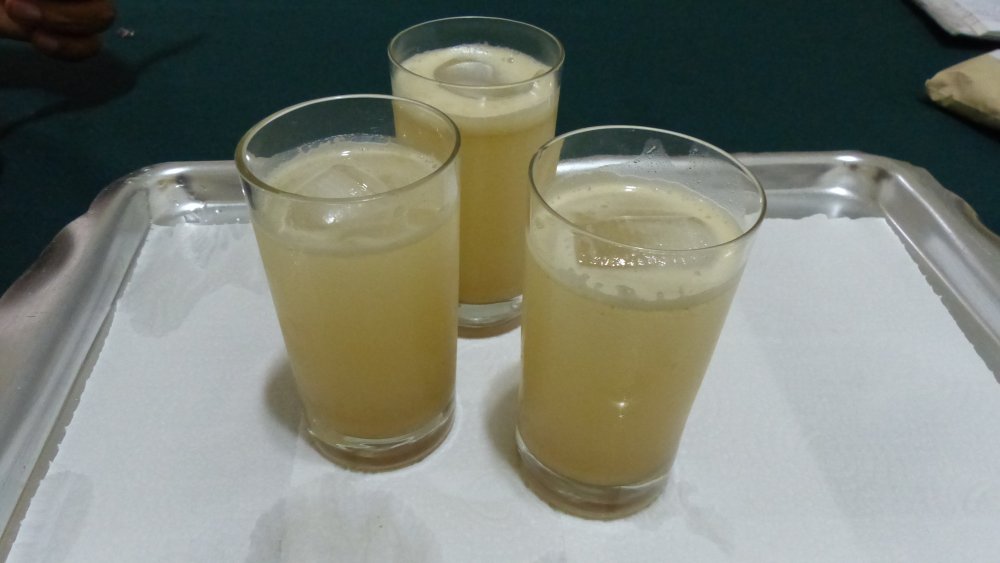The Truth About Guarana
Guarana is something many people consume without being aware of it. For example, energy drinks are popular, but they can contain mystery ingredients — and one of those ingredients is guarana, most commonly used in Monster Energy and Rockstar Energy Drink (via HuffPost).
Guarana is a plant native to the Amazon, and it produces berries that contain caffeine. In fact, 70 percent of the guarana grown in the Amazon today is used in energy drinks (via Healthline). Their caffeine content is, incidentally, higher than coffee beans, which makes it an ideal ingredient for energy drinks. When that ingredient is listed on an energy drink, it signals that there is even more caffeine than the average caffeinated beverage.
There is a reason guarana is used as an ingredient. A study comparing the effects of guarana, coffee, and yerba mate was conducted at the University of Tasmania, which found that guarana produced the highest level of alertness. It also caused an improvement in mental tasks. While coffee causes alertness to peak approximately 30 to 45 minutes after consumption, and then rapidly decline, the effects of guarana were ongoing after 150 minutes, or around two and a half hours. This may be the result of guarana causing a delay in the metabolism of caffeine, or a slowing of the absorption of caffeine (via Body and Soul).
Health benefits of guarana
Guarana has many health benefits. For one, it contains antioxidants, with an antioxidant profile that is quite similar to green tea. Antioxidants neutralize free radicals, which are potentially harmful molecules in the body which have been linked to heart disease and cancer.
Another benefit of guarana is less expected — it has been used as a treatment for digestive problems for centuries. Ailments such as chronic diarrhea and constipation have been shown to improve with consumption of guarana. This is likely a result of tannins, which are known for being astringent, or constricting. This allows them to bind and contract the tissue in your digestive tract. However, as previously mentioned, guarana is very high in caffeine, which acts as a diuretic or natural laxative. As a result, the use of guarana in low doses is more likely to help digestive issues, while higher doses result in the diuretic and laxative effects.
Guarana was also used as a pain reliever in Amazonian tribes, which is due to its high level of caffeine. Caffeine works to bind or block the adenosine receptors that are involved in the stimulation of pain. This is one reason caffeine is included in many over the counter pain relief medications.
That's not all. Guarana is also a popular ingredient in cosmetics. This is because the antioxidants it contains may reduce skin damage related to age. Studies in animals have shown guarana to improve skin tightness and minimize wrinkles.
Side effects of guarana
A major reason guarana is used for all these purposes is that it is widely available and considered safe for use. Also, the side effects are minimal. Taken in high doses, guarana has the same side effects as overuse of caffeine, such as insomnia, anxiety, heart palpitations, upset stomach, and shakiness. Again, guarana is most effective in lower doses.
Guarana should not be used in high doses in pregnant women due to the caffeine, which can increase the risk of health problems with the pregnancy. There is no official recommended dose of guarana, but research has found that 50 to 75 milligrams will suffice to provide the health benefits — and alertness — without causing caffeine overuse side effects.


